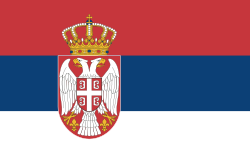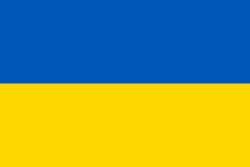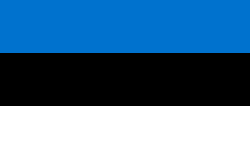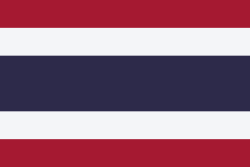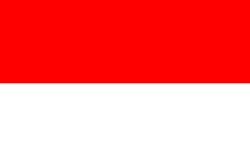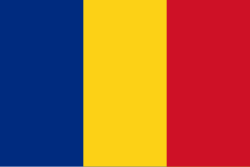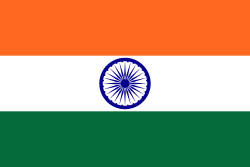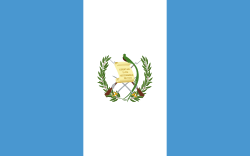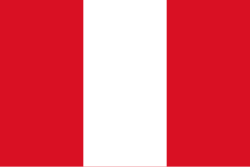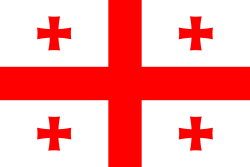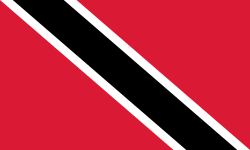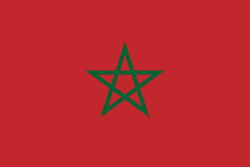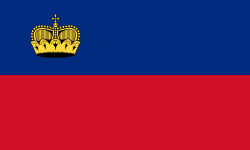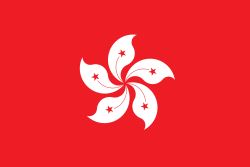Fed Cup 2010
Fed Cup 2010 var den 48. udgave af Fed Cup, ITF' turnering for kvindelige tennislandshold.
Turneringen blev vundet af Italien, som i finalen besejrede USA med 3-1, og som dermed vandt Fed Cup-titlen for andet år i træk og tredje gang i alt. Det var også andet år i træk, at italienerne besejrede netop USA i finalen.
Italiens hold bestod i alle holdets tre holdkampe af spillerne Francesca Schiavone, Flavia Pennetta, Sara Errani og Roberta Vinci, hvoraf de to sidstnævnte dog ikke kom i kamp i finalen, eftersom holdkampen allerede var afgjort efter de fire singlekampe.
Hold
Turneringen afvikledes i fem niveauer, hvor World Group med otte hold var den højest rangerende. Ud fra placeringerne i Fed Cup 2009 var følgende hold kvalificerede til spil i de fem nivaeuer. Hold, der er rykket op fra et lavere niveau, er markeret med (O), mens hold der er rykket ned fra et højere niveau er markeret med (N).
World Group
Otte hold deltog i World Group, der afvikledes som en ren cup-turnering med kvartfinaler, semifinaler og finale. De fire tabere af kvartfinalerne måtte spille kvalifikationskampe mod de fire vindere af kampene i World Group II for at forblive i World Group.
| Kvartfinaler 6. - 7. februar | Semifinaler 24. - 25. april | Finale 6. - 7. november | |||||||||||
| 2 | | 4 | |||||||||||
| | 1 | ||||||||||||
| 2 | | 5 | |||||||||||
| 4 | | 0 | |||||||||||
| | 2 | ||||||||||||
| 4 | | 3 | |||||||||||
| 2 | | 3 | |||||||||||
| 3 | | 1 | |||||||||||
| 1 | | 3 | |||||||||||
| | 2 | ||||||||||||
| 1 | | 2 | |||||||||||
| 3 | | 3 | |||||||||||
| | 1 | ||||||||||||
| 3 | | 4 | |||||||||||
World Group II
 Tekst mangler, hjælp os med at skrive teksten
Tekst mangler, hjælp os med at skrive teksten
Gruppe I
 Tekst mangler, hjælp os med at skrive teksten
Tekst mangler, hjælp os med at skrive teksten
Gruppe II
 Tekst mangler, hjælp os med at skrive teksten
Tekst mangler, hjælp os med at skrive teksten
Gruppe III
 Tekst mangler, hjælp os med at skrive teksten
Tekst mangler, hjælp os med at skrive teksten
Kilder / eksterne henvisninger
- Fed Cup Arkiveret 7. oktober 2010 hos Wayback Machine (engelsk) (spansk)
Medier brugt på denne side
Flag of the United States. Aspect ratio modified (stretched) for projects that require 3:2 format.
Tysklands flag med forholdet 3:2, i stedet for 3:5
Tysklands flag med forholdet 3:2, i stedet for 3:5
Flag of Poland. Aspect ratio modified for projects that require an aspect ratio of 3:2.
Flag of the Australia. Aspect ratio modified (stretched) for projects that require an aspect ratio of 3:2.
Flag of the Australia. Aspect ratio modified (stretched) for projects that require an aspect ratio of 3:2.
Flag of Israel. Aspect ratio modified for projects that require an aspect ratio of 3:2.
Flag of Switzerland at sea
Flag of Canada using Pantone colors. Aspect ratio modified for projects that require an aspect ratio of 3:2.
Flag of Belarus. Aspect ratio modified (cropped) for projects that require an aspect ratio of 3:2.
3:2 variant of flag of Paraguay
Flag of the New Zealand. Aspect ratio modified (stretched) for projects that require an aspect ratio of 3:2 N.B this representation is not correct. The New Zealand flag has an aspect ratio of 1:2 further more the position of the stars is also incorrect. ref. http://www.mch.govt.nz/nz-identity-heritage/flags/description-and-dimensions .
Flag of Sweden. Aspect ratio modified for projects that require an aspect ratio of 3:2.
The national flag of Kingdom of Thailand; there are total of 3 colours:
- Red represents the blood spilt to protect Thailand’s independence and often more simply described as representing the nation.
- White represents the religion of Buddhism, the predominant religion of the nation
- Blue represents the monarchy of the nation, which is recognised as the centre of Thai hearts.
Flag of Denmark. Aspect ratio modified for projects that require an aspect ratio of 3:2.
bendera Indonesia
Det er let at give dette billede en kant
3:2 variant of flag of Uzbekistan
Flag of Austria with the red in the Austrian national colours which was official ordered within the Austrian Armed Forces (Bundesheer) in the characteristic “Pantone 032 C” (since May 2018 the Red is ordered in the characteristic “Pantone 186 C”.)
Flag of Latvia. Aspect ratio modified for projects that require an aspect ratio of 3:2. This ratio was used in the Republic of Latvia until 1923. [1] [2]
Flag of Portugal, created by Columbano Bordalo Pinheiro (1857–1929), officially adopted by Portuguese government in June 30th 1911 (in use since about November 1910). Color shades matching the RGB values officially reccomended here. (PMS values should be used for direct ink or textile; CMYK for 4-color offset printing on paper; this is an image for screen display, RGB should be used.)
Flag of Kazakhstan. Aspect ratio modified for projects that require an aspect ratio of 3:2.
Flag of Bulgaria. Aspect ratio modified (stretched) for projects that require an aspect ratio of 3:2.
Flag of Luxembourg. Aspect ratio modified for projects that require an aspect ratio of 3:2.
Flag of Mexico. Aspect ratio modified for projects that require an aspect ratio of 3:2.
Used color: National flag | South African Government and Pantone Color Picker
| grøn | rendered as RGB 0 119 73 | Pantone 3415 C |
| gul | rendered as RGB 255 184 28 | Pantone 1235 C |
| rød | rendered as RGB 224 60 49 | Pantone 179 C |
| blå | rendered as RGB 0 20 137 | Pantone Reflex Blue C |
| hvid | rendered as RGB 255 255 255 | |
| sort | rendered as RGB 0 0 0 |
The flag of the Dominican Republic has a centered white cross that extends to the edges. This emblem is similar to the flag design and shows a bible, a cross of gold and 6 Dominican flags. There are branches of olive and palm around the shield and above on the ribbon is the motto "Dios,Patria!, Libertad" ("God, Country, Freedom") and to amiable freedom. The blue is said to stand for liberty, red for the fire and blood of the independence struggle and the white cross symbolized that God has not forgotten his people. "Republica Dominicana". The Dominican flag was designed by Juan Pablo Duarte, father of the national Independence of Dominican Republic. The first dominican flag was sewn by a young lady named Concepción Bona, who lived across the street of El Baluarte, monument where the patriots gathered to fight for the independence, the night of February 27th, 1844. Concepción Bona was helped by her first cousin María de Jesús Pina.
Flag of Iran. The tricolor flag was introduced in 1906, but after the Islamic Revolution of 1979 the Arabic words 'Allahu akbar' ('God is great'), written in the Kufic script of the Qur'an and repeated 22 times, were added to the red and green strips where they border the white central strip and in the middle is the emblem of Iran (which is a stylized Persian alphabet of the Arabic word Allah ("God")).
The official ISIRI standard (translation at FotW) gives two slightly different methods of construction for the flag: a compass-and-straightedge construction used for File:Flag of Iran (official).svg, and a "simplified" construction sheet with rational numbers used for this file.
Trinidad og Tobagos flag
Flag of Norway. Aspect ratio modified for projects that require an aspect ratio of 3:2.
Flag of Finland. Aspect ratio modified for projects that require an aspect ratio of 3:2.
Flag of Liechtenstein
3:2 version of Image:Flag of Ireland.svg, for when a 3:2 version looks better (e.g. beside a group of other 3:2 flags)
The correct proportions are 2:1 so should be used instead.Flag of the Republic of Moldova. Aspect ratio modified for projects that require an aspect ratio of 3:2.
Flag of the Bahamas. Aspect ratio modified for projects that require an aspect ratio of 3:2.
Flag of Armenia. Aspect ratio modified (cropped) for projects that require an aspect ratio of 3:2.
flag of Argentina, used between 1861 and 2010. Aspect ratio modified for projects that require an aspect ratio of 3:2.
Flag of Iceland. Aspect ratio modified for projects that require an aspect ratio of 3:2.
Flag of Bosnia and Herzegovina. Aspect ratio modified for projects that require an aspect ratio of 3:2.
Flag of Cuba. Aspect ratio modified for projects that require an aspect ratio of 3:2.





